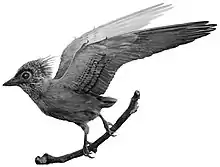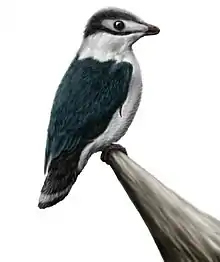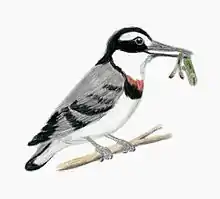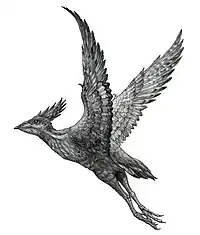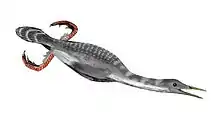Pamparaptor
Pamparaptor is an extinct genus of carnivorous deinonychosaur from the late Cretaceous period. It is a basal dromaeosaurid dinosaur with troodontid-like pes which lived during the late Cretaceous period (Turonian to Coniacian stage) in what is now Neuquén province, Patagonia, Argentina. It is known from the holotype MUCPv-1163, an articulated and nearly complete left foot.
| Pamparaptor | |
|---|---|
 | |
| Pamparaptor micros | |
| Scientific classification | |
| Kingdom: | Animalia |
| Phylum: | Chordata |
| Clade: | Dinosauria |
| Clade: | Saurischia |
| Clade: | Theropoda |
| Family: | †Dromaeosauridae |
| Genus: | †Pamparaptor Porfiri, Calvo & Santos, 2011 |
| Species: | †P. micros |
| Binomial name | |
| †Pamparaptor micros Porfiri, Calvo & Santos, 2011 | |
The specimen recovered from the Portezuelo Formation (Río Neuquén Subgroup) of Neuquén Group. It was initially considered to be a juvenile specimen of another dromaeosaurid species, Neuquenraptor argentinus.[1] However, it was later re-interpreted as a new genus and named Pamparaptor by Juan D. Porfiri, Jorge O. Calvo and Domenica dos Santos in 2011 and the type species is Pamparaptor micros. The generic name honors Indian Pampas people who lived in central Argentina while "raptor" (robber in Latin). The specific name (micros, meaning "small") refers to the specimen's size (estimated at 0.5 to 0.7 metres (1.6 to 2.3 ft) in length).[2]
See also
References
- Porfiri, Calvo, dos Santos and Valieri, 2007. New record of Neuquenraptor (Theropoda, Dromaeosauridae) from the Late Cretaceous of Patagonia. Ameghiniana. 44(S), 34R.
- Porfiri, Juan D.; Jorge O. Calvo; Domenica dos Santos (2011). "A new small deinonychosaur (Dinosauria: Theropoda) from the Late Cretaceous of Patagonia, Argentina" (PDF). Anais da Academia Brasileira de Ciências. 83 (1): 109–116. doi:10.1590/S0001-37652011000100007. ISSN 0001-3765. PMID 21437378.
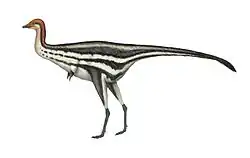
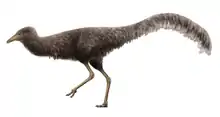
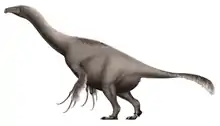
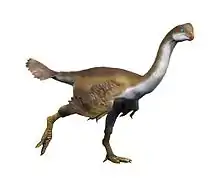
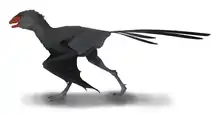
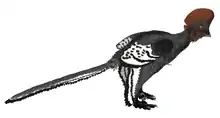
.png.webp)



.jpg.webp)
